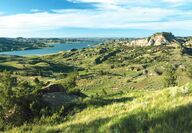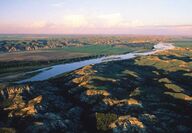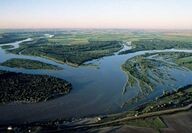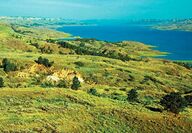Sorted by date Results 1 - 6 of 6

During the Dec. 21 winter solstice, the sun takes a brief respite on the Tropic of Capricorn at 23.5 degrees south latitude. Over the next six months, it journeys north for a June 21 rendezvous with the Tropic of Cancer at 23.5 degrees north latitude. En route, on about March 20, for one brief moment it touches its rays directly over the equator, declaring the spring equinox. In Montana, this pronouncement is merely a promise of something to come, as March's third week usually finds us yet deep...

Some of Montana's earliest recorded history played out on the eastern fringes of our state. Through Fort Union, this "Confluence Country" held supremacy over the fur trade business of the Upper Missouri from about 1830 until the 1850s. On April 27, 1805, the Corps of Discovery, after having spent a few days at the joining of the two rivers, (just across the state line in North Dakota), first entered what would become Montana Territory. Meriwether Lewis noted in the expedition journals ... "we sa...

Agates are another lower Yellowstone River attraction. Millions of years ago, volcanoes ruled Montana east of the mountains. Powerful eruptions of molten lava and ash covered and destroyed hundreds of miles of forests. After centuries of activity, the climate cooled and rain washed silica and minerals from the surface of the land down into the labyrinths of hardened lava beds, filling the nooks and crannies with what several eons later would become Montana agates. In those unstable geologic...

It is an uncommon landscape – at once stark, beautiful, imposing and inviting – this Charles M. Russell National Wildlife Refuge. Time has left most of it with the same appearance as when the Crow, Blackfeet, Nez Perce and Sioux hunted and did battle here. And while some of the wildlife species have disappeared, notably bison and grizzly bears, others, including elk and bighorn sheep, thrive. The CMR, as it is commonly called, occupies a large swath of Montana's northeast quadrant and is in the...

Location: Northeast Montana near today's Snowden Bridge just west of the confluence of the Missouri and Yellowstone rivers. In the evening of a day that saw the Corps of Discovery cross into what would become Montana, Captain Meriwether Lewis put words to paper and commenced the first written history of Montana. Heretofore everything was oral. What follows are some of those sentences, excerpted from the original journals of Lewis & Clark as penned April 27, 1805: "This morning I walked through...
The imposing Rocky Mountain Front defines the eastern flank of Montana’s mountainous domain before it flows into open terrain to the east. On the north, it stretches 460 miles from Browning and the east slopes of Glacier National Park to the North Dakota line just beyond Sidney. Somewhat less defined, the central boundary begins in the valley of the upper Musselshell River, near Harlowton, and reaches for 300 miles to our state’s eastern edge. On the south, it is 250 miles as the golden eagle glides, from Red Lodge and the east face of the Bea...